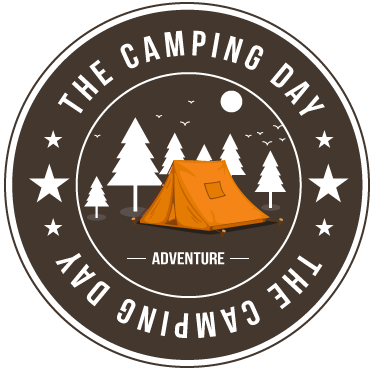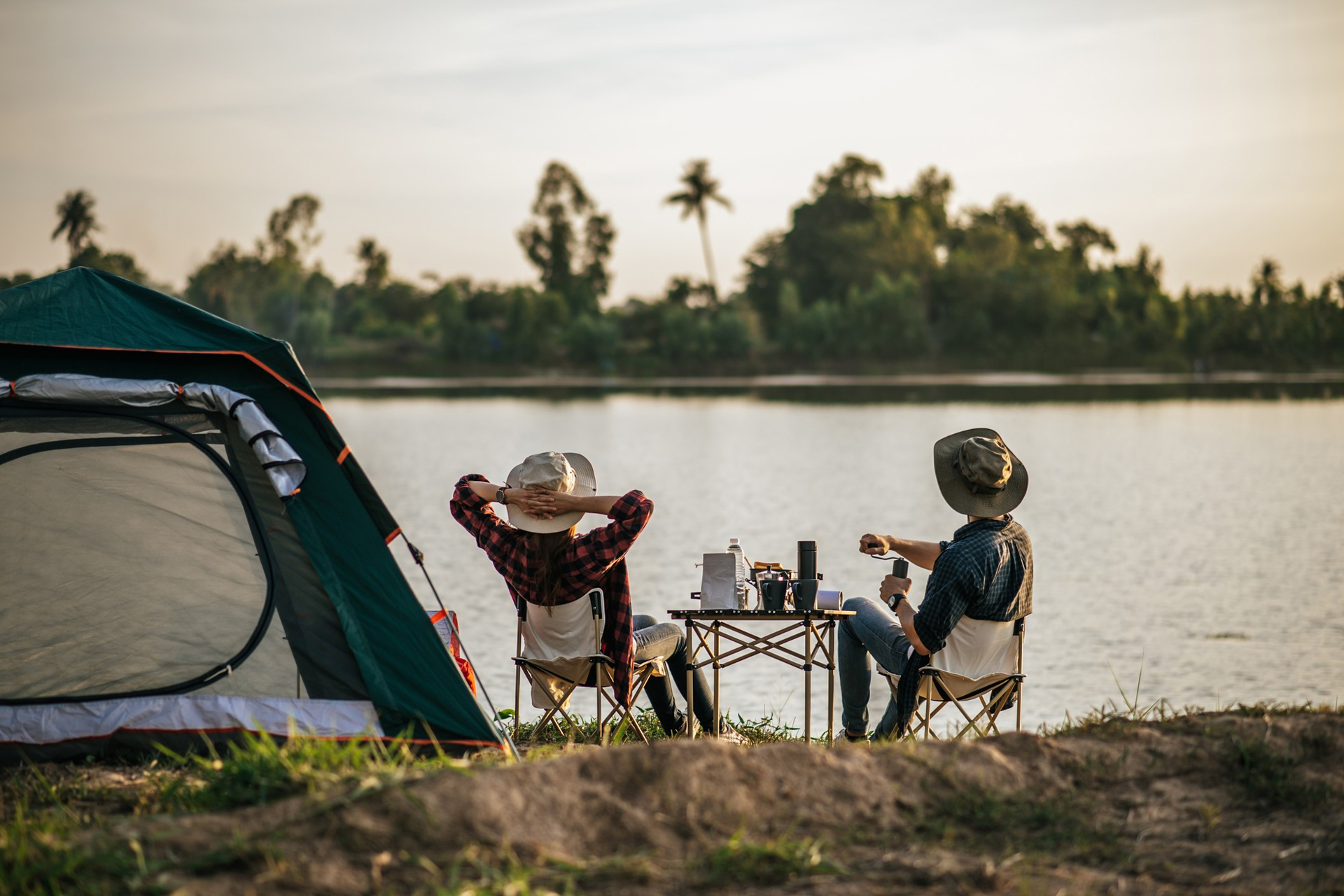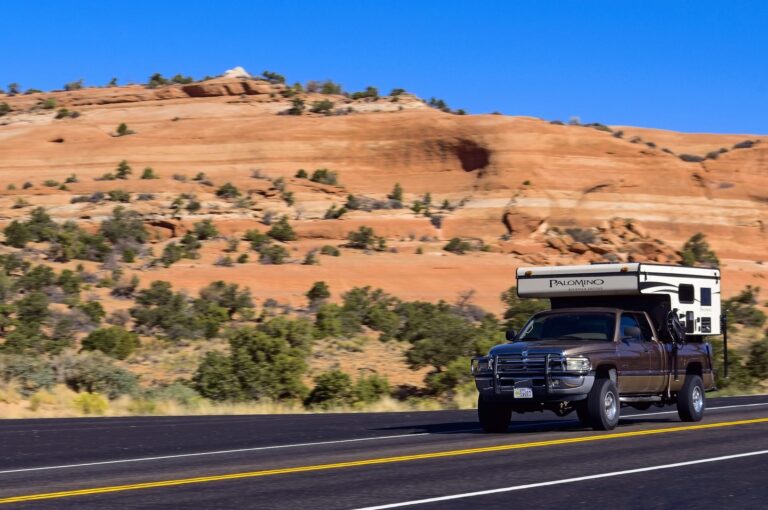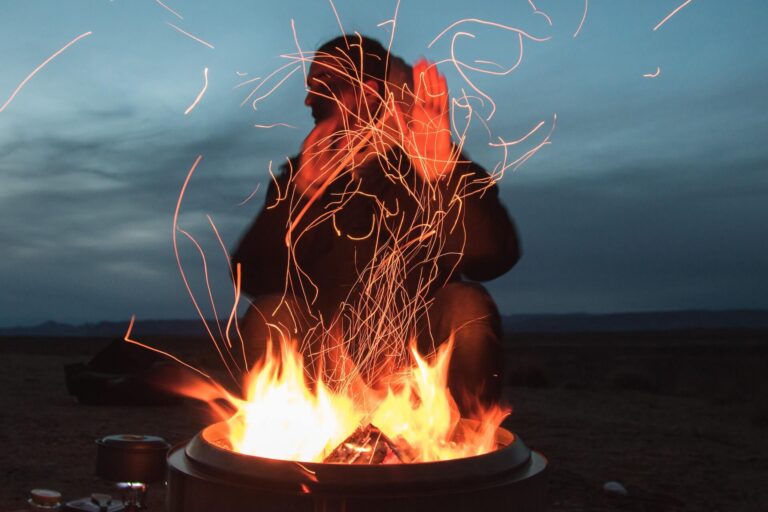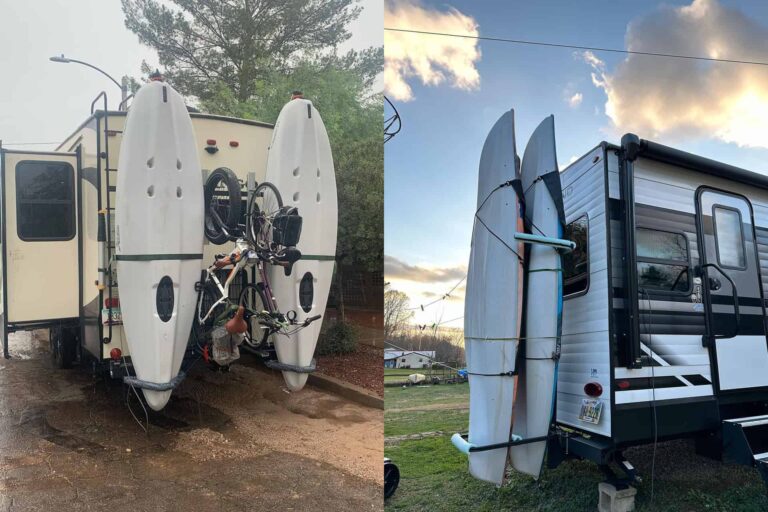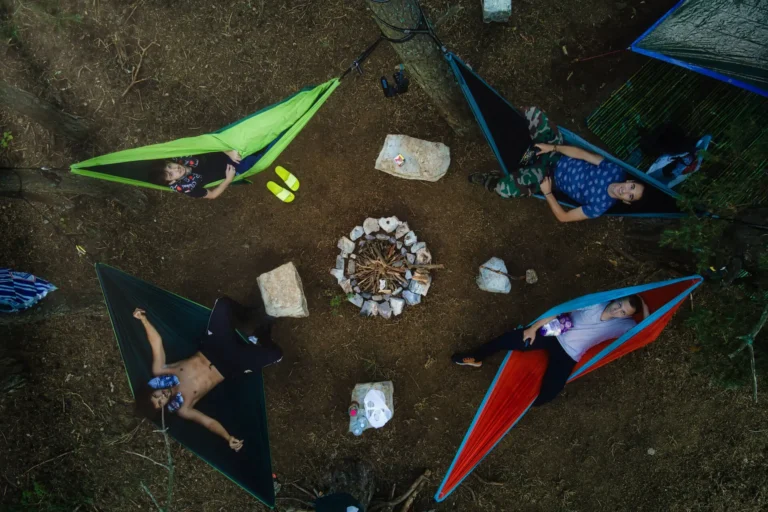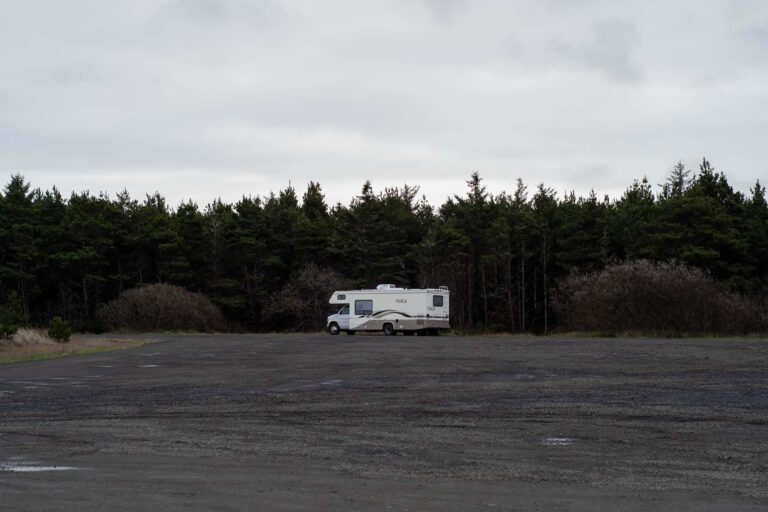How to Stay Cool in Summer Camping|The Ultimate Guide
In some countries they are already planning summer camping even though it is not yet summer. If you are reading this article and you happen to be planning a summer camping trip, then you have come to the right place.
Whether you’re a seasoned camper or a first-timer, there’s nothing quite like spending warm summer days and starry nights in the fresh air and sunshine. So plan ahead, grab your tent when summer arrives, pack your gear, and get ready to make some memories!
Here is a guide on how to stay cool and comfortable camping in the summer heat.
What is summer camping for adults?
Hey! You may think of summer camping as a place for kids, but have you ever heard of summer camping for adults? It’s time to ditch the daily grind and head out into the great outdoors for a summer camping trip for adults! Whether you’re looking to escape the city, spend time with friends, or just unplug and recharge, there’s nothing quite like the feeling of setting up camp, cooking over an open fire, and falling asleep under the stars.

So get ready to make new friends, share camping experiences, and make unforgettable memories this summer at our adult summer camping!
What should I bring to summer camping?
So you’re going on a summer camping trip? Well, you want to make sure you have everything you need to stay comfortable and have a good time.
Here’s a list of some of the essentials you should pack:
Reusable water bottle:Hydration is very important in the summer heat.
Sunscreen: Ain’t nobody got time for sunburns!
Bug spray: Because those pesky mosquitoes love to bite.
Hat and sunglasses: Gotta keep that sun out of your eyes and off your face.
Cooler and ice: Keep your drinks and snacks chilled and refreshing.
Cooking supplies: Flint and fuel can always keep the fire from being extinguished. Camping stove or grill is Perfect for cooking up some hot dogs and burgers. of course don‘t foget the utensils, and pots and pans to prepare your meals.
A tent or hammock, sleeping bag, and sleeping pad and pillow: Don’t forget the essentials for a good night’s sleep.
Chairs: You’ll want a comfortable place to sit and relax around the campfire.
Flashlights and/or lanterns: Essential for nighttime excursions and finding your way to the bathroom.
Clothing: Bring comfortable and weather-appropriate clothing, including hiking shoes, swimwear, and rain gear, depending on your destination.
Food and drinks: Plan ahead and bring plenty of snacks, meals, and drinks to keep you fueled and hydrated throughout your trip.

Lighting: Flashlights, headlamps, and lanterns will help you navigate your campsite and find your way around at night.
Entertainment: Bring games, books, or other activities to keep you entertained during downtime.
Toiletries: toothbrush, toothpaste, soap, deodorant, shampoo, etc.
Portable fan:Keeping you as cool as possible.
Pack your sense of adventure and openness to trying new things! With these essentials, you’ll be ready for a wonderful summer camping trip.

How to choose the best summer campsite
Make sure you choose a location for your summer camping trip where the temperatures will be comfortable. Choose a campsite with at least some shade. Bring your own trap or awning. Being near water while camping will also keep you cool, especially if the water is suitable for swimming. Rivers, streams, lakes and reservoirs are all excellent choices.
Higher elevation camping is best during the summer. Go to the mountains when the weather is milder and the snow is melting. If extreme heat is predicted, you may want to reconsider your plans and stay at a private campground instead.
Right building of the campsite
Setting up the tarp on the top of the tent in the right way
Place the tarp on the ground and point it in the direction the wind is blowing. You can use the method mentioned above to determine the wind direction. After determining the wind direction, you will know where to place the tarp on the high side and where to place it on the low side.

Then string up the tarp with the parachute cord and tie it to the tree. You will find that by placing the tarp correctly in the direction of the wind, you will always have a cool breeze in the area.
Then take the tent you are about to pitch and pitch it off to the back of the tarp.
Pro tips: Clear the area around the tent of any leaves or weeds to keep them off the ground. Because the ground is covered with leaves and weeds, the heat at the bottom of the tent is not reduced.
Summer camping: How to keep your tent cool
If you’re going camping in the summer from June to August, that means it’s the hottest time of the year! But don’t worry, there are plenty of ways to keep your tent cool and comfortable even when the temperatures are soaring. We’ll show you some local tips and tricks to help you beat the heat and enjoy your summer camping experience to the fullest!
Pitch your tent in a shaded area
The best campsite is one with plenty of shade if you want to keep your tent cool. To keep your tent as cool as possible throughout the day, pitch it in the area with the most shade.
Little shade? To avoid the greenhouse effect during the day, take down your tent when you wake up. Put it up again before going to bed at night.
Direct sun can deteriorate your tent fabrics much faster, so shade and/or dismantling and reassembling your tent is also essential for its life.
Correct use of Reflective sunshade
One of the best ways to stay cool when camping is to use a reflective sunshade. Anything under its shade will be significantly cooler due to its ability to reflect sunlight back into the sky. Using them to shield your tent or common area from the sun’s direct rays is the goal when camping. Sunshades allow you to sleep in even after the sun has risen, which is when the “sauna” effect really kicks in, as any experienced camper knows.
The optimal location for a sunshade is slightly above the tent. To allow air to circulate over the tent and keep things cool, leave at least 12 inches between the top of the tent and the sunshade.
Note that a sunshade does not always have to be made of flashy, reflective Mylar, although that can work quite well. It can be as simple as a tarp. To secure the shade over your tent, use trees, stakes, or poles.
Use of nature’s wind
You should think very carefully about where you place your sleeping area. Nature’s air conditioner is the wind. Harnessing the wind, even if it’s not very strong, is essential to staying cool when camping in the heat.
Try to pitch your tent in a shady area with a constant breeze. If your tent door faces the direction of the wind, you will stay cooler than downwind.
Use these techniques to determine wind direction.
- Ask the locals: Campground owners and employees, full-timers, or locals may have an excellent understanding of which way the wind blows at different times of the day.
- Check the weather: Most weather apps will tell you which way the wind is blowing.
- Look for wind socks: Many campsites have windsocks or flags to help you determine the direction of the wind.
- Feel the breeze: When a breeze is blowing, turn your face toward it and feel which cheek feels cooler-that’s the side the wind is blowing from.
- Use toilet paper: Bring toilet paper and simply hold it up, you can see the breeze blowing this toilet paper, so you can identify the direction of the wind.

Let the air out of your tent
A very small breeze can significantly reduce the temperature inside your tent.
To get the most airflow when camping, camp without a rain fly if the forecast allows. Any extra vents, windows or doors can be opened to let the breeze cool your tent while you’re outside.
Choose a tent with a lot of mesh
We can compare choosing a tent with lots of mesh to having an old-fashioned porch with a nice breeze coming through. Even on the hottest days, the increased circulation and ventilation of mesh panels can help you stay cool and comfortable. Plus, the mesh also helps keep insects and other pests out.
So for your summer camping trip, choose a tent with plenty of mesh; you’ll thank yourself later.
Buying a portable fan
It’s easy to sweat when it’s hot outside, and even more so when you’re in a tent. You can keep the air moving and avoid overheating by using a portable fan. A good camping fan should be lightweight, quiet, and attachable to the floor, wall, or ceiling of the tent. Since you’ll be using the fan in close quarters, look for one with foam blades.
Other 6 Tips Let you stay cool while summer camping
Drink lots of water
Water is the most important part of staying cool, safe, and healthy on summer camping trips.
We all know that when camping in the snow, surrounded by snow, you can always grab a handful of snow, put it in a cup, boil it, and drink it. But when you’re camping in the summer, the campsite you’re at can’t be too far from a water source, because the heat, rising body temperature, and loss of water after sweating a lot can lead to many problems and health risks from dehydration.
So try to drink at least 67 ounces of water a day or more. Even when you are not thirsty, you need to drink water throughout the day. Before you go camping, try to get into the habit of drinking at least eight glasses of water a day.
Wearing the right clothes
Popular summer camp attire includes shorts, t-shirts (or tank tops), and sandals. But not all camping situations call for them.
The most important step is to choose the appropriate clothing for your campground. Of course, the clothing requirements for hiking and RV camping are quite different.
The ideal clothing for scattered camping or backpacking is often lightweight, breathable fabric.
When hiking or bushwhacking, it’s best to wear lightweight, breathable pants rather than shorts. They’ll keep you cool and protect you from pesky insects, poison oak, and simple cuts. Long-sleeved T-shirts in moisture-wicking fabrics keep you cool and dry. Any odor from hiking will be diminished because your sweat will evaporate much faster than it would in a typical cotton T-shirt.
A good hat is just as important as appropriate clothing when packing for summer camp. I like sun hats that I can bring with me.
A Towel Should Be Soaked And Placed Over The Neck Or Forehead
Placing a damp towel on the back of your neck is a great way to stay cool during the day when the weather is extremely oppressive. At night, try placing a small handkerchief soaked in cold water on your forehead. As noted earlier, the high specific heat of water allows it to absorb a significant amount of heat from your skin before it warms up. When it does, simply turn it over and enjoy the process again.
You can soak a bandana in cold water and wrap it loosely around your neck before going on a trek. Several variations of this technique, such as wearing a damp shirt or wetting your hat, will have the same effect.
Day and night temperature difference
In some places, there is a big difference between daytime and nighttime temperatures during the summer months. The temperature is high during the day, but it tends to drop a lot at night, especially in mountainous areas. So you will feel cold and want to avoid the wind and have insulation. So you need to be flexible to adjust the way you cool & insulate.
Bring light-colored clothes
There is no escaping the rules of nature that the sun’s rays are absorbed by dark surfaces and reflected by light ones. Instead of trying to fight it, cooperate with it by bringing only light-colored clothing to your summer camping trips. You’ll stay much cooler during the day.
Also, choose breathable fabrics that allow heat to escape, such as cotton and linen. For fashion inspiration, look to the traditional dress of hot regions, such as the Middle East and Saharan Africa, where clothing is often white, loose-fitting, and breathable. In addition, the greater body coverage of these garments provides additional UV protection. Use plenty of sunscreen if you wear shorts or short sleeves.
Pro tips:If you’re planning a multi-day trip with little or no opportunity to shower in between, I recommend natural fibers like cotton or linen. They will be the best at minimizing odor compared to synthetic fibers. This may not be a problem if you are overlanding, but it could be if you are hiking for several days.
Protect Your Skin
To protect your skin from harmful ultraviolet (UV) rays, use an adequate amount of sunscreen. UV rays can damage your eyes and cause immune suppression, skin cancer, and premature skin aging. Applying sunscreen regularly will help protect your skin from the sun and prevent uncomfortable sunburns. Wear a sun hat and sunglasses for added protection.
The Best Summer Campground in the United States
If you’re a first-time camper planning to prepare for summer, you might want to consider visiting some of the more well-known modern campgrounds in the United States.
Yellowstone National Park in Wyoming, Acadia National Park in Maine and Great Smoky Mountains National Park in Tennessee have stunning scenery and a wealth of amenities that make them excellent choices for your camping trip.
For the more experienced camper looking for a hidden gem, consider the North Rim of the Grand Canyon in Arizona, The views from the Grand Canyon campgrounds are breathtaking. The campground is well equipped. The restrooms are very clean. Showers. Laundry room. Well equipped campgrounds. Staff very friendly. Great value North Rim is non-commercial, quiet and amazingly scenic. North Rim Campground is open May 15 through October 15, and access to the North Rim Campground requires a backcountry permit.
You can also explore canyons and desert landscapes while camping under the stars at Big Bend National Park in Texas.
Visit Assateague Island National Seashore in Maryland for a beach camping experience where you can camp right on the sand and watch wild horses roam in the dunes. For a more secluded beach experience, try Cumberland Island National Seashore in Georgia. Here, you can pitch your tent on a barrier island and take in the area’s breathtaking natural splendor.
With its lush rainforests, rocky coastline, and towering mountains, Washington’s Olympic National Park is a fantastic campground in the Pacific Northwest. Joshua Tree National Park in California, on the other hand, offers a distinctive desert camping experience with strange rock formations and bright nights ideal for stargazing.
No matter what your level of camping experience, the USA has a variety of beautiful summer campgrounds to discover and enjoy. Get ready for an outdoor vacation by packing your bags and gathering your camping gear.
Conclusion
In short, summer camping is an amazing adventure, and with the right preparation, it can be an unforgettable experience. With this summer camping guide, you’ll have all the information you need to prepare for your trip, from choosing the right campsite, to the basic equipment you’ll need, to how to stay cool in the summer heat. With this guide and a little bit of adventure, you’re sure to enjoy the great outdoors.
Related articles:The Ultimate Guide To Learning About Camping Yurt Tent
